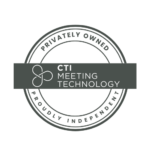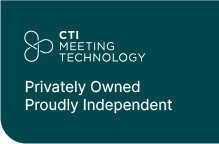More than 5 billion individuals worldwide are social media users. That means more than half of the total population. It’s highly likely that your target audience and future event attendees are already using at least one social media platform, so why not leverage these tools to communicate with them and promote your events?
Despite the many benefits of social media, it’s not always easy to reach your target audience. Where to find your audience will depend on your event’s theme, demographics, location, etc.
Not all channels are the same; each social media platform offers different advantages for reaching and engaging with your audience. As an event planner or communications specialist, you should make sure you prepare an effective communication plan tailored to the chosen platforms.
Imagine these platforms as different types of parties. Each party has its own atmosphere, guests, and social norms. You would not dress the same for your best friend’s birthday party as you would when meeting the President! Understand the unique components and regulations of every social media platform to use them effectively.
Feeling a little bit lost with all the available options? No worries! We have some tips ready to help you leverage social media for promoting your upcoming event.
Know Your Audience
Step one is knowing your audience. You want to make sure you’re at the right party with the right set of people! By now, you probably have a general idea of who your target audience is, and maybe even developed a buyer persona.
Your audience’s age, preferences, profession, or location will help you identify which social media platform they use most frequently. For example, if your event targets professionals or companies in general, platforms like LinkedIn are the most effective for reaching them.
Age is also a crucial factor. While LinkedIn is used by individuals from a wide age range, platforms like Facebook cater to a more mature audience, while TikTok or Instagram have mostly younger users.
And don’t forget about their location! Most social media platforms are available worldwide, but it’s always advisable to look into the regulations of each country. Let’s say the majority of your audience comes from China, then you should be aware that X (formerly Twitter) is banned in the country. You can also communicate through local apps like Weibo if your audience in a specific country is big enough.
And remember when we mentioned wearing the right outfit for each occasion? Well, you also need to “wear a different outfit” when using different social media websites. Once you have determined which platforms your audience is using, it’s time to tailor your content to match each site’s characteristics.
Research competitors and content that resonates with your audience. This could mean sharing short highlights of your event on X, behind-the-scenes pictures on Instagram, or posting informative articles on LinkedIn. Providing content that is relevant to your audience’s preferences can help you reach and engage with them, increasing the chance of your event being shared with others.
While there’s a lot of information you can get from analyzing your competitors and your target audience’s behavior on social media, these platforms are always changing. Make sure to develop your own distinctive voice to stand out from the rest, try new things, and evaluate what works and what doesn’t. Don’t shy away from trial and error!
Create Attention-Grabbing Content
It’s very easy to keep scrolling on a social media app. This is why you need to capture your audience’s attention in just a few seconds. Utilize visual elements such as eye-catching graphics and images or videos that convey the essence of your event. The goal is to grab the user’s attention, sparking their curiosity enough to lead them to your event’s website.
Experiment with different formats such as detailed lists, infographics, GIFs, or short videos to add variety and increase engagement. Try until you find the right format for your event and your future attendees.
In addition to attention-grabbing visuals, consistency in branding is essential. Design promotional materials for your event such as banners or cover pictures that align with the event’s theme and overall branding. Use consistent colors, fonts and visual elements to establish a strong and recognizable social media presence. This will help your audience identify you and your event throughout different platforms, and engage with the content you’re posting.
Leveraging Interactivity
When it comes to promoting your event on social media, engagement is key. Engagement refers to interactions with your posts, which can be likes, reposts, reactions, or comments. Engaged users mean a high probability of sharing your event’s details with their network, bringing in even more attendees for your meeting. Here are some strategies to consider to encourage participation:
- Conduct Polls, Surveys, and Quizzes: Platforms like LinkedIn allow you to post surveys directly in your posts. This is a great way to gather valuable insights and information related to your event. Ask your audience which topics they would like to learn more about, or about their event format of preference. Users only need one click to answer but you’ll get really valuable data.
- Encourage Comments: Starting a conversation is crucial to establish a stronger relationship with your audience. As a general rule, you can end every post with a thought-provoking question that invites your audience to share their opinions and experiences. These should be related to your event’s theme to make sure you’re reaching the right people. Encourage your audience to tag friends and colleagues as well to expand the reach of your discussions.
- Leverage Video Content: Platforms like Facebook, Instagram, or even YouTube offer live video features that allow real-time interaction between organizers and attendees. This is a perfect way to get closer to your audience and build anticipation for your event, by sharing a glimpse of what they will experience during the meeting.
Interactive content is key to enhancing engagement, but it can also provide useful information for organizers and create a sense of community with your audience.
Even big companies like Apple share behind-the-scenes event content to showcase their products and increase engagement.
Event Hashtags
Most social media platforms allow the use of hashtags. These are powerful tools for increasing the visibility of your event. When used correctly, they can connect you to people who don’t know your company yet but might be interested in your event.
As a rule of thumb, use hashtags that are relevant to your event. Let’s take Comic Con as an example. Hashtags like #Comics, #Cosplay, or #Anime are related to the event, attracting individuals interested in these topics who could become potential attendees. You can also add the city where the event is taking place, in this case, #SanDiego, and the event name itself: #ComicCon.
Here are some tips for making the most out of event hashtags:
- Keep It Short: Similar to logos, create a unique and memorable hashtag that captures the essence of your event. Make it short and easy to spell to avoid participants using the wrong term.
- Use It Everywhere: Okay, maybe not everywhere. But make sure you add the hashtag to every event-related post on your social media channels. This way, it becomes easily recognizable and associated with your event, encouraging participants to use it in their posts as well.
- Enhance Your Event’s Visibility: Encourage speakers, attendees, and sponsors to use the event hashtag in their posts. This not only creates a sense of community but also amplifies your event’s reach.
Collaborate with Influencers and Partners
If it’s relevant to your event, collaborating with influencers can also be a great way to promote your event. By identifying influencers relevant to your meeting’s theme or target audience, you can reach their existing followers and expand your event’s reach. Reach out to these influencers and propose joint promotional activities.
If instead you’re catering to a B2B audience, or influencers are not really relevant for your event, you can also leverage partners and speakers to enhance your meeting’s reach. Allow them to post event-related content on their own social media channels and highlight their presence in your conference. Who would want to pass up a party with their favorite singer or actor in attendance? Don’t miss out on the opportunity of having influencers and partners to draw more people to your meeting.
Exclusive Offers
Another option to enhance engagement and generate buzz around your event is providing exclusive offers or early-bird discounts through social media. Everyone likes a discount, and by offering early-bird discounts you create a sense of urgency to get the tickets for a reduced price. Your followers can also have access to exclusive giveaways or contests to get event tickets, creating an atmosphere of exclusivity.
Encourage participants to share their posts or tag their friends to expand the reach and visibility of your event to a wider audience. The more people share about your event, the greater the chances that you will increase attendance!
Consider Paid Advertising
While organic reach is crucial, paid advertising can amplify your event promotion efforts. Each social media platform offers advertising options that allow you to reach specific demographics to ensure your message reaches the right people.
When setting up a paid campaign, it’s essential to define clear objectives. An example would be getting 500 registrants for your event in two weeks. Align your ad content, visuals, and call-to-action according to your objectives, and regularly monitor the ad’s performance. Social media channels offer relevant metrics that you can access, such as click-through rates, conversions, and engagement.
Remember, paid ads are not a static element. You can – and should – make the necessary adjustments to your copy or visuals to ensure you meet your campaign goals!
Post-Event Updates
Don’t forget about social media when your event is over! You can still use your channels to share highlights and extend your meeting’s lifespan. Share memorable moments from the event through engaging visuals and videos – and thank attendees, speakers, and sponsors for their participation.
While this is not a mandatory step, it can help participants relive the experience, share their thoughts, and anticipate future events from your organization. Take some time to create a few posts after your meeting to strengthen the relationship with your audience!
To Wrap Up…
Social media has revolutionized the way we promote events. We can now reach thousands of people around the world with just a few clicks, but that doesn’t mean you should just post a link to the event registration page and hope for the best!
By analyzing your audience’s preferences, curating compelling content, and implementing other strategies such as the use of hashtags or paid ad campaigns, you can effectively take your meeting to the right audience with a minimal cost. There’s no secret formula to successfully promoting your event on social media, so try different things until you get it right!
At CTI Meeting Technology, we also embrace the power of social media to showcase our company. Check out how we do it on LinkedIn and Facebook, you might even get some ideas for your own organization!






